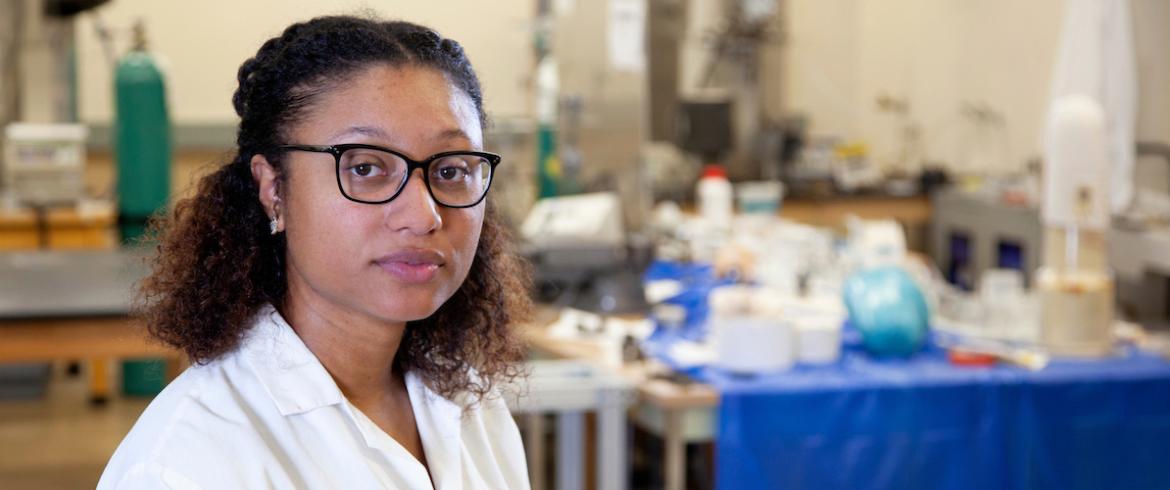
When FAMU-FSU College of Engineering student Roneisha Haney got the disappointing news that her internship offer from The Dow Chemical Company would be postponed due to COVID-19, the determined chemical engineering doctoral candidate decided to make the most of her situation. She applied and got accepted to participate in a prestigious symposium event hosted by Dow to showcase her skills.
Haney has been invited to attend the annual Building Engineering and Science Talent (BEST) Symposium held in Midland, Michigan. The event will be held in an all-virtual format this year and is scheduled for July 28-30, in 2020. The experience allows participants to present their research and network with Dow professionals.
“Roneisha has made tremendous progress in the last two years,” said chemical engineering professor Subramanian Ramakrishnan. “She spent a summer working on research at Wright Patterson Air Force Base where she was developing lightweight composites for the U.S. Air Force. She also 3-D printed composites for them.”
Ramakrishnan, Haney’s research advisor, explained that the young Florida A&M University scholar’s work eventually led to a National Science Foundation fellowship where Haney can continue the work at Brook Haven National Labs in collaboration with the USAF.
Dow’s BEST Symposium introduces doctoral students and post-doctoral scientists from U.S. minority groups (Hispanic, African American, or Native American) to a wide range of careers in industrial research. The conference was developed jointly by Dow’s minority scientists and doctoral recruiting team to support the company’s commitment to a diverse workforce.
“I am thrilled that I will have the opportunity to showcase my research at the Dow event,” Haney said. ”As an African American female in STEM, I hope to serve as a mentor and influence other students who may have a background similar to mine.”
Haney’s work that she will be presenting at the symposium will highlight electrical and thermal conducting graphite-based structures for thermal applications.
“As a first-generation college student, I didn’t have a mentor and was not necessarily given proper guidance as an aspiring scientist and engineer,” Haney said. “I want to use my industry position to serve as a role model for other students, motivate them to pursue a career in STEM, and provide them with any tools or resources to assist them in their journey.”
Haney plans to work as a formulation scientist in research and development and focus on consumer product development after graduation.
